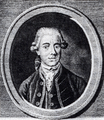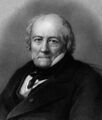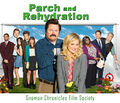Template:Selected anniversaries/February 3: Difference between revisions
No edit summary |
No edit summary |
||
| (25 intermediate revisions by the same user not shown) | |||
| Line 1: | Line 1: | ||
<gallery> | <gallery> | ||
|| *** DONE: Pics *** | |||
File:Gutenberg.jpg|link=Johannes Gutenberg (nonfiction)|1468: Blacksmith, goldsmith, inventor, and publisher [[Johannes Gutenberg (nonfiction)|Johannes Gutenberg]] dies. | File:Gutenberg.jpg|link=Johannes Gutenberg (nonfiction)|1468: Blacksmith, goldsmith, inventor, and publisher [[Johannes Gutenberg (nonfiction)|Johannes Gutenberg]] dies. | ||
||1690: The colony of Massachusetts issues the first paper money in the Americas. See: https://www.nationalgeographic.org/thisday/feb3/paper-money-introduced-us/ | |||
|| | ||1737: Mathematician and academic Tommaso Ceva dies. His only published mathematical work, ''Opuscula Mathematica'', dealt with geometry, gravity and arithmetic. He was also a noted poet and dedicated a significant amount of his time at this task. Pic. | ||
|| | ||1774: Karl Brandan Mollweide born ... German mathematician and astronomer in Halle and Leipzig. Pic search scanty. | ||
||1777: John Cheyne born ... physician and author. He was one of the first to identify Cheyne–Stokes respiration. Pic. | |||
|| | ||1790: Gideon Mantell born ... obstetrician, geologist and palaeontologist. His attempts to reconstruct the structure and life of Iguanodon began the scientific study of dinosaurs: in 1822 he was responsible for the discovery (and the eventual identification) of the first fossil teeth, and later much of the skeleton, of Iguanodon. Pic. | ||
|| | File:Johann Beckmann.png|link=Johann Beckmann (nonfiction)|1811: Scientist and author [[Johann Beckmann (nonfiction)|Johann Beckmann]] dies. He coined the word ''technology'', meaning the science of trades, and was the first to teach technology and write about it as an academic subject. | ||
|| | ||1817: Achille Ernest Oscar Joseph Delesse born ... geologist and mineralogist. Pic. | ||
|| | ||1821: Elizabeth Blackwell born ... physician and educator. She played an important role in both the United States and the United Kingdom as a social and moral reformer. She acted as a pioneer in promoting the education of women in medicine. Pic. | ||
|| | ||1831: Ogden Nicholas Rood born ... physicist best known for his work in color theory. Pic. | ||
|| | ||1859: Hugo Junkers born ... engineer, designed the Junkers J 1. Pic. | ||
File:Jean Baptiste Biot.jpg|link=Jean-Baptiste Biot (nonfiction)|1862: Physicist, astronomer, and mathematician [[Jean-Baptiste Biot (nonfiction)|Jean-Baptiste Biot]] dies. He established the reality of meteorites, made an early balloon flight, and studied the polarization of light. | File:Jean Baptiste Biot.jpg|link=Jean-Baptiste Biot (nonfiction)|1862: Physicist, astronomer, and mathematician [[Jean-Baptiste Biot (nonfiction)|Jean-Baptiste Biot]] dies. He established the reality of meteorites, made an early balloon flight, and studied the polarization of light. | ||
||1864: Petrus Jacobus Kipp dies ... Dutch apothecary, chemist and instrument maker. He became known as the inventor of the Kipp apparatus, chemistry equipment for the development of gases. | |||
||1884: Gotthilf | ||1884: Gotthilf Hagen dies ... civil engineer who made important contributions to fluid dynamics, hydraulic engineering and probability theory. Pic. | ||
||1887: Georg Trakl born ... pharmacist and poet. | ||1887: Georg Trakl born ... pharmacist and poet. Pic. | ||
||1890: Paul | ||1890: Paul Scherrer born ... physicist. Pic. | ||
File:Gaston_Julia.jpg|link=Gaston Julia (nonfiction)|1893: Mathematician [[Gaston Julia (nonfiction)|Gaston | File:Gaston_Julia.jpg|link=Gaston Julia (nonfiction)|1893: Mathematician [[Gaston Julia (nonfiction)|Gaston Julia]] born. He will devise the formula for the Julia set, which consists of values such that an arbitrarily small perturbation can cause drastic changes in the sequence of iterated function values. Julia's work will later prove foundational to chaos theory. | ||
||1895: Thomas Penyngton Kirkman dies ... mathematician and ordained minister of the Church of England. Pic: https://ca.wikipedia.org/wiki/Thomas_Kirkman | ||1895: Thomas Penyngton Kirkman dies ... mathematician and ordained minister of the Church of England. Pic: https://ca.wikipedia.org/wiki/Thomas_Kirkman | ||
| Line 40: | Line 40: | ||
||1898: Pavel Samuilovich Urysohn born ...mathematician of Jewish origin who is best known for his contributions in dimension theory, and for developing Urysohn's Metrization Theorem and Urysohn's Lemma. Pic. | ||1898: Pavel Samuilovich Urysohn born ...mathematician of Jewish origin who is best known for his contributions in dimension theory, and for developing Urysohn's Metrization Theorem and Urysohn's Lemma. Pic. | ||
||1905: Arne Beurling born ... mathematician and academic ... worked extensively in harmonic analysis, complex analysis and potential theory. The "Beurling factorization" helped mathematical scientists to understand the Wold decomposition, and inspired further work on the invariant subspaces of linear operators and operator algebras, e.g. Håkan Hedenmalm's factorization theorem for Bergman spaces. | ||1905: Arne Beurling born ... mathematician and academic ... worked extensively in harmonic analysis, complex analysis and potential theory. The "Beurling factorization" helped mathematical scientists to understand the Wold decomposition, and inspired further work on the invariant subspaces of linear operators and operator algebras, e.g. Håkan Hedenmalm's factorization theorem for Bergman spaces. Pic search. | ||
||1909: Simone Weil born ... mystic and philosopher. Pic. | |||
||1911: Francis Joseph Murray born ... mathematician, known for his foundational work (with John von Neumann) on functional analysis, and what subsequently became known as von Neumann algebras. Pic search. | |||
|| | ||1917: Georgi Evgen'evich Shilov born ... Soviet mathematician and expert in the field of functional analysis, who contributed to the theory of normed rings and generalized functions. Pic. | ||
|| | ||1921: Bruno Touschek born ... physicist, a survivor of the Holocaust, and initiator of research on electron-positron colliders. Pic. | ||
|| | ||1924: Edward Palmer Thompson born ... historian, writer, socialist and peace campaigner. Pic (megaphone). | ||
||Marion | File:Oliver Heaviside.jpg|link=Oliver Heaviside (nonfiction)|1925: Self-taught electrical engineer, mathematician, and physicist [[Oliver Heaviside (nonfiction)|Oliver Heaviside]] dies. Heaviside made major breakthroughs in the applied mathematics of electrical engineering; although he was at odds with the scientific establishment for most of his life, Heaviside changed the face of telecommunications, mathematics, and science for years to come. | ||
File:Marion Tinsley.jpg|link=Marion Tinsley (nonfiction)|1927: Mathematician and checkers player [[Marion Tinsley (nonfiction)|Marion Tinsley]] born. Tinsley will be "to checkers what Leonardo da Vinci was to science, what Michelangelo was to art and what Beethoven was to music." | |||
File:Agner Krarup Erlang.jpg|link=Agner Krarup Erlang (nonfiction)|1929: Mathematician and engineer [[Agner Krarup Erlang (nonfiction)|Agner Krarup Erlang]] dies. He invented the fields of traffic engineering, queueing theory, and telephone networks analysis. | File:Agner Krarup Erlang.jpg|link=Agner Krarup Erlang (nonfiction)|1929: Mathematician and engineer [[Agner Krarup Erlang (nonfiction)|Agner Krarup Erlang]] dies. He invented the fields of traffic engineering, queueing theory, and telephone networks analysis. | ||
||1935 | ||1935: Hugo Junkers dies ... engineer, designed the Junkers J 1. Pic. | ||
||1956 | ||1956: Émile Borel dies ... mathematician and academic. Pic. | ||
||1958: Milutin Dostanić born ... mathematician and academic. He contributed to functional analysis and operator theory. Pic. | |||
File:Cantor Parabola and Gnotilus at Athens.jpg|link=Cantor Parabola and Gnotilus at Athens|1959: ''[[Cantor Parabola and Gnotilus at Athens]]'' hailed as "a triumph of art and crime-fighting." | File:Cantor Parabola and Gnotilus at Athens.jpg|link=Cantor Parabola and Gnotilus at Athens|1959: ''[[Cantor Parabola and Gnotilus at Athens]]'' hailed as "a triumph of art and crime-fighting." | ||
File:Boeing EC-135C Looking Glass.jpg|link=Operation Looking Glass (nonfiction)|1961: The United States Air Forces begins [[Operation Looking Glass (nonfiction)|Operation Looking Glass]], and over the next 30 years, a "Doomsday Plane" is always in the air, with the capability of taking direct control of the United States' bombers and missiles in the event of the destruction of the SAC's command post. | File:Boeing EC-135C Looking Glass.jpg|link=Operation Looking Glass (nonfiction)|1961: The United States Air Forces begins [[Operation Looking Glass (nonfiction)|Operation Looking Glass]], and over the next 30 years, a "Doomsday Plane" is always in the air, with the capability of taking direct control of the United States' bombers and missiles in the event of the destruction of the SAC's command post. | ||
||1968: Carl Krauch dies ... chemist, industrialist and Nazi war criminal. He was an executive at BASF (later IG Farben); during World War II, he was chairman of the supervisory board. He was a key implementer of the Reich’s Four-Year Plan to achieve national economic self-sufficiency and promote industrial production. He was Plenipotentiary of Special Issues in Chemical Production. Pic. | |||
File:William_D._Coolidge.jpg|link=William D. Coolidge (nonfiction)|1975: Physicist and engineer [[William D. Coolidge (nonfiction)|William D. Coolidge]] dies. He made major contributions to X-ray machines, and developed ductile tungsten for incandescent light bulbs. | File:William_D._Coolidge.jpg|link=William D. Coolidge (nonfiction)|1975: Physicist and engineer [[William D. Coolidge (nonfiction)|William D. Coolidge]] dies. He made major contributions to X-ray machines, and developed ductile tungsten for incandescent light bulbs. | ||
||1985 | ||1985: Frank Oppenheimer dies ... physicist and academic. Pic. | ||
||2004: Natascha Artin Brunswick dies ... mathematician and photographer. Pic. | |||
|| | ||2005: Ernst Mayr dies ... biologist and ornithologist ... taxonomy, speciation. Pic. | ||
|| | ||2007: Thomas Christian Sneum dies ... Danish pilot. He collected information about the German Freya radar that had been installed on his home island in Denmark. On the night of 21–22 June 1941 he and pilot Kjeld Pedersen made a spectacular escape from Denmark to Great Britain in a D.H. Hornet Moth. Pic: https://alchetron.com/Thomas-Sneum | ||
File: | File:Parch and Rehydration.jpg|link=Parch and Rehydration|2009: Premiere of '''''[[Parch and Rehydration]]''''', an American hydrological satire mockumentary sitcom television series about a perky, mid-level plumber in the Water Department of Drownee, a fictional town in Indiana. | ||
</gallery> | </gallery> | ||
Latest revision as of 06:47, 28 April 2023
1468: Blacksmith, goldsmith, inventor, and publisher Johannes Gutenberg dies.
1811: Scientist and author Johann Beckmann dies. He coined the word technology, meaning the science of trades, and was the first to teach technology and write about it as an academic subject.
1862: Physicist, astronomer, and mathematician Jean-Baptiste Biot dies. He established the reality of meteorites, made an early balloon flight, and studied the polarization of light.
1893: Mathematician Gaston Julia born. He will devise the formula for the Julia set, which consists of values such that an arbitrarily small perturbation can cause drastic changes in the sequence of iterated function values. Julia's work will later prove foundational to chaos theory.
1925: Self-taught electrical engineer, mathematician, and physicist Oliver Heaviside dies. Heaviside made major breakthroughs in the applied mathematics of electrical engineering; although he was at odds with the scientific establishment for most of his life, Heaviside changed the face of telecommunications, mathematics, and science for years to come.
1927: Mathematician and checkers player Marion Tinsley born. Tinsley will be "to checkers what Leonardo da Vinci was to science, what Michelangelo was to art and what Beethoven was to music."
1929: Mathematician and engineer Agner Krarup Erlang dies. He invented the fields of traffic engineering, queueing theory, and telephone networks analysis.
1959: Cantor Parabola and Gnotilus at Athens hailed as "a triumph of art and crime-fighting."
1961: The United States Air Forces begins Operation Looking Glass, and over the next 30 years, a "Doomsday Plane" is always in the air, with the capability of taking direct control of the United States' bombers and missiles in the event of the destruction of the SAC's command post.
1975: Physicist and engineer William D. Coolidge dies. He made major contributions to X-ray machines, and developed ductile tungsten for incandescent light bulbs.
2009: Premiere of Parch and Rehydration, an American hydrological satire mockumentary sitcom television series about a perky, mid-level plumber in the Water Department of Drownee, a fictional town in Indiana.










